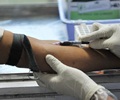Hepatitis B virus (HBV) infection is a dynamic process with variable biochemical, virological and histological profiles at different stages of the infection, depending on host and viral factors.
Hepatitis B virus (HBV) infection is a dynamic process which involves several variable biochemical, virological and histological profiles at different stages of the infection. This depends on host and viral factors. Furthermore, this profile may change at a variable pace over time. The correlation between detection of T-cell response and HBV load in chronic HBV infection remains unknown.
In each of the clinical stages of chronic HBV infection, whether the composition of T-cell subpopulations is different and relates to viral load. Thus characterization of T-cell profile is relevant to improved understanding of chronic HBV infection and the design of antiviral therapy.A research article to be published on July 21, 2009 in the World Journal of Gastroenterology addresses this question. The research team, led by Professor Jing You from the Department of Infectious Diseases of the First Affiliated Hospital of Kunming Medical University of China and the Epidemiology Unit of the Faculty of Medicine of Prince of Songkla University of Thailand, investigated the peripheral T-cell subpopulation profiles and their correlation with viral replication in different clinical stages of chronic HBV infection. The article further indicated that the clinical stages of chronic HBV infection, separated on virological and biochemical parameters, have characteristic peripheral T-cell subpopulation profiles. HBV load, in patients at immune-tolerant and -active stages, contributes to the variations of peripheral T cell subpopulation profiles.
The results revealed T-cell impairment was significantly associated with HBV replication level. The substantial linear dose–response relationship and strong independent predictive effect of serum HBV load level on T-lymphocyte subpopulations suggests the possibility of a causal relationship between them. And this relationship exists in immune-tolerant patients and immune-active patients. The multivariate multiple regression analysis demonstrated a partial independent effects of HBeAg and HBV precore mutant infection on T-cell profile. Multivariate multiple regression displayed that log copies of HBV DNA still maintained its highly significant predictive coefficient for T-cell subpopulations, and was the strongest predictor of variation of CD3+, CD4+ and CD8+ cells and CD4+/CD8+ ratio after adjustment for age at HBV-infection, maternal HBV-infection status, presence of HBeAg and HBV mutation, HBV viral load in patients at the immune-tolerant and immune-active stages contributes to the variations in peripheral T cell subpopulation profile, which is relevant to the design of individualized new anti-viral strategies. Further study is required to better understand the complex host-virus interaction that determines the persistence and outcome of HBV infection.
Source-Eurekalert
TAN















